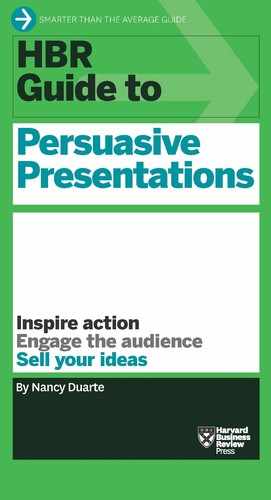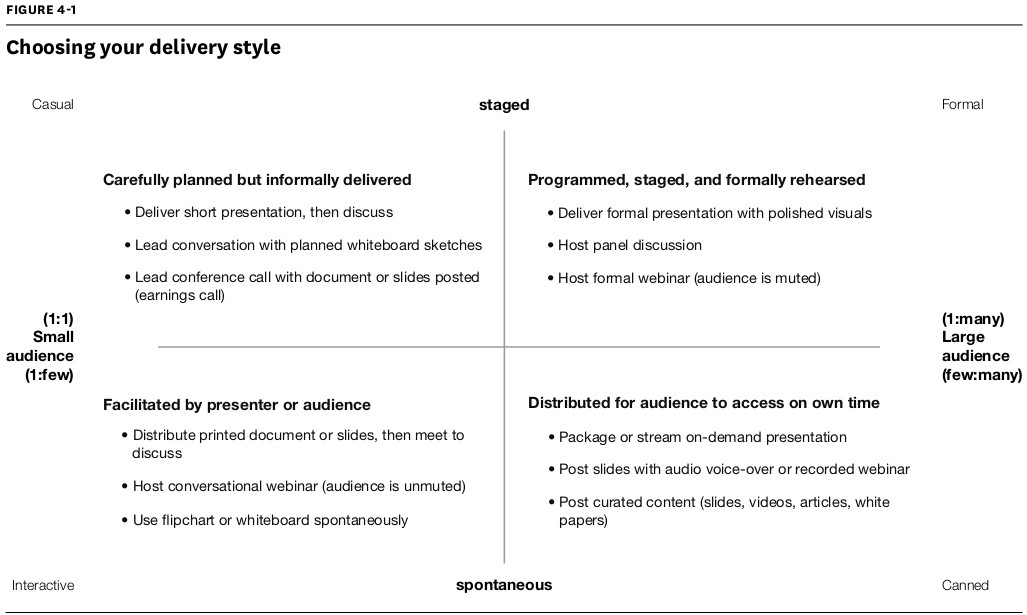Choose the Right Vehicle for Your Message
Now that you’ve carefully considered your audience’s needs and tailored your message and content accordingly, it’s time to determine how the people you’re addressing prefer to process information so you can select the best vehicle for reaching them. Just because you have something to communicate and a time slot to fill doesn’t mean a formal presentation with slides is the right choice. Some audiences—a group of analysts, for example—may find a thoughtfully written memo more persuasive. Others, such as young professionals, might prefer a video.
It’s your job to determine the best way to connect with your audience. Presentations aren’t limited to a single time or place anymore. They can be broadcasted, streamed, downloaded, and distributed. Slides aren’t a must-have, either. You can use props, handouts, sketches, tablets, videos, flipcharts—pretty much anything that will help people receive your message.
Before opening your presentation software, think about your audience and venue. Will you be speaking to a few team members in an intimate setting? A big crowd in an auditorium? A small group who will be connecting remotely? The size of your audience and the level of interaction that your setting allows should determine which media you choose.
See figure 4-1 for a sampling of ideas on how to deliver your message to one person or many, in a staged or more spontaneous setting.
There’s also an element of common sense. Delivering a stand-up formal presentation in a small conference room just doesn’t make sense if you’re speaking to two of your direct reports—but it does if you’re speaking to a couple of venture capitalists who may invest in your business.
Although technology has opened up new ways of communicating, a low-tech approach is sometimes your best bet. If you show up with a slick slide deck, everything seems final. But sketching out ideas while people watch and listen signals that your thinking is in the formative stages and that the audience can still weigh in.
Maybe the “presentation” you’re developing should really be a carefully mapped-out conversation with a planned whiteboard drawing. When my firm was buying a new digital storage system, we met with two potential vendors: One brought a deck of slides and didn’t deviate from its spiel. The other, which won our business, white-boarded out a full storage and network plan. That rep came across as having listened to our needs and understood what we wanted. Her presentation felt collaborative, not canned.

